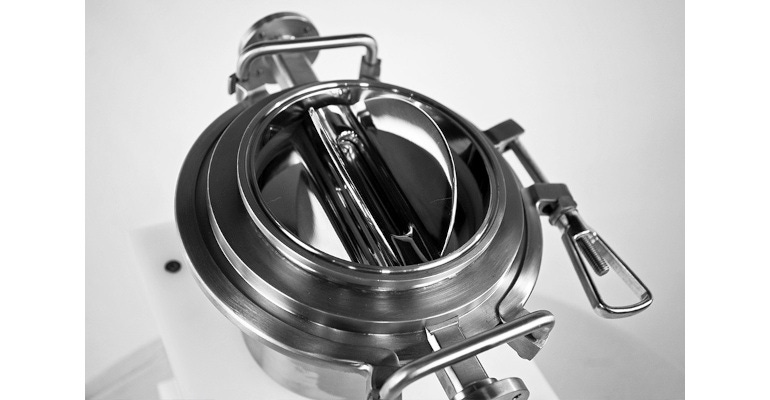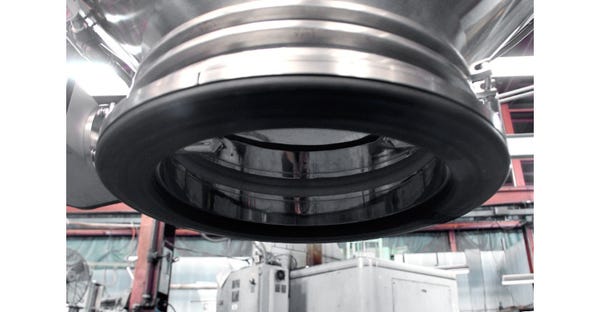Integrating Powder Automation Systems Reduce Time, Waste, Hazards
Turn isolated processes into a powder flow thru system
May 19, 2021

Gregg Muench, vice president, GEMCO, Jonathan Braido, marketing manager, Key International, Pat Heder, owner, Post Material Handling
Imagine eliminating the stop and go of routine powder handling. The procedure of feeding powder to mills, screens, mixers, and other processes as separate steps can add hours or days of wasted processing time. Extra operators are required for material handling at each step to bring powder in and out of the different process suites. Integrated powder automation is more time efficient, reduces energy needs, helps to increase productivity, and reduces the amount of overall waste. The risk of human error is also reduced because utilizing automated processing means fewer people are involved in the production process from start to finish.
Batch flow (BF) operations are considered slow compared to continuous flow (CF) operations because of the downtime in between the processing steps of the batch operations. To make the batch operation efficient, we can combine steps and make them faster and more reliable. CF operation must include packaging at the rate of production, another limiting and costly integration.
The integration of multiple process steps needs to include these six elements:
1. Feeding/weight control
Feeding and weight control are critical to beginning a flow that the processes can handle. Deviations in feeding can cause reduced production rates by overloading a piece of equipment, causing a jam, or underfilling it so it cannot work. Rotary feeders and rotary dosers have proven to regulate flow extremely well, while providing a constant flow, from grams to tons.
2. Flow Control
The perfect flow for powder is a vertical drop. Vertical drops offer speed, efficiency, and mass flow. We often do not have the room height for a stack-up to do this. The design of angled chutes must consider the angle of repose of the powder, powder sliding friction, ledge elimination, and mechanical flow aides.

Image 2: Inflatable seals offer pressure tight seals with gaps as small as 12mm.
3. Dust Containment
Dust costs you money in more ways than one. Dust on the floor is wasted inventory. Dust in the air is a potential health hazard with increased dust collection and PPE costs. Dust increases housekeeping costs. By designing machine inlets and outlets to accept dust-tight connections, operators can easily secure fittings and flexible connections that keep powder flowing. A pin hole can compromise the powder and an entire system. These connections and fittings do not have to be expensive; tri-clover and snap-in types are cheaper than cloth boots with band clamps and they attach without tools.

Image 3: Mezzanines give operators ease of access in a safe manner. Stainless steel polishes construction makes cleaning them quick.
4. Operator Ergonomics
While working with drums, totes, or bulk bags, we need to make it easy and safe for the operator. An unloading station may be required for these containers. This initial step should be designed for one operator using a contained mechanical device instead of several operators using a manual system. Platforms, mezzanines, and stairways can be integrated for monitoring, control, maintenance, and housekeeping in the process area.
5. Safety
A continuous flow operation has fewer areas for operator contact, which reduces the risk of accidents, either to the operator or the powder. Moving parts are covered during normal operation. Areas can combine hazardous locations for dust, vapor, and washdown. An integrated continuous system must be designed to meet all of these requirements. Many new quick disconnect connectors are available to make maintenance and housekeeping easy. A contained system is the safest system.
6. Control and Repetitive Process Variable Verification
A PLC is used to balance the system flow. The normal conditions that are monitored by an operator are switched to the PLC. Sensors are used to monitor the powder flow and weight and then control it through the PLC. The monitoring system will provide a more comprehensive report and in more detail than most users have ever experienced.
By using the greater resources of several companies, a client can reap the benefits of a better continuous design, while decreasing operating costs. Validation of a continuous flow system also offers cost savings in set-up and daily reporting. Reducing time, waste, and hazards by integrating systems is clearly a winning strategy.
Gregg Muench is vice president, GEMCO; Jonathan Braido is marketing manager, Key International; Pat Heder is owner, Post Material Handling.
You May Also Like


